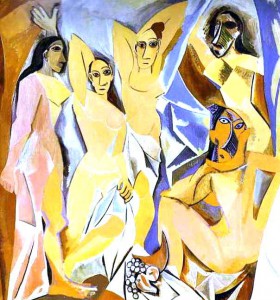 Aesthetics is a traditional philosophy. It has a long history, rich not easy searching and original finds. But by the mid-eighteenth century. it is usually included as works in general philosophical content. In the XVIII century German philosopher and theorist singled O.Baumharten body of knowledge about human feelings and outlined the subject of science, which is now referred to as aesthetics.
Aesthetics is a traditional philosophy. It has a long history, rich not easy searching and original finds. But by the mid-eighteenth century. it is usually included as works in general philosophical content. In the XVIII century German philosopher and theorist singled O.Baumharten body of knowledge about human feelings and outlined the subject of science, which is now referred to as aesthetics.
The above-mentioned philosopher and the author of the doctrine in the name of the sensory area of ??knowledge as compared to lower mentally. Thanks to the work of individual sense can perceive objects and natural phenomena, things created by himself during practice works of art. This is not the case in where else but sensually shaped prints, perfect copies properties pervozdanoho world as well as lines, colors, colors, contrasts, sound, ie its unique beauty forever. Because aesthetics initially considered the science of the beautiful, and the scope of the study includes the category “sublime”, “comic”, “tragic” and others. Aesthetics – the study of the formation and development of sensory human culture.
The subject of aesthetics is perceptual knowledge of reality with its various areas – nature, society, man. That is the subject of aesthetics – patterns of sensory perception, artistic activity and creativity. Within the course “Aesthetics” can not fully consider all the work of authors who have contributed to the development of the centuries-old aesthetic thought. Therefore it is advisable to prepare essays devoted to the analysis of aesthetic views of individual thinkers or philosophical and aesthetic currents. The history of aesthetic as a form of human being – difficult to explain the problem. This is one of the mysteries of history.
In modern aesthetics prevailing hypothesis about the origin of aesthetic during practice subject-lyudyny.Scho As for the definition of this complex phenomenon, in contemporary literature aesthetic regarded as a universal characteristic of social material and spiritual life. Man is able to obtain satisfaction, spiritual joy and the beauty of nature and the useful qualities of living things and communicating with art. According to this understanding of the nature of aesthetic we note that in the human being there are no areas that would be devoid of aesthetic activity.
Aesthetic activity – specifically human, productive form of active attitude to the world and to themselves according to the laws of beauty to create and use aesthetic values. The goal of aesthetic found not outside but in person, thanks to her developing personality qualities and abilities that have a common cultural, spiritual and everyday value. In particular, the ability to emotional and mental responses, a subtle communication with others, figurative and objective thinking and so on.
Aesthetic activity intrinsically ambiguous. It is a system of activities, which is defined by specificity goals and transform the nature of the object on which it is directed transformation. According distinguished practical aesthetics, technical aesthetics and art. Referring to the manual “Aesthetics” (ed. Lozovoy VI, Section VI) where you can decide the nature and specifics of each type of aesthetic. Provide examples of practical significance of aesthetics in daily life.
You can oharektyryzuvaty link design with art, engineering and technology. The system of aesthetic development of the world public entity formed aesthetic activity along with the aesthetic consciousness. Aesthetic consciousness versatile, it reflects reality through aesthetic sense, evaluation, tastes and ideals. Consider aesthetic feeling as the basis of aesthetic consciousness of a particular individual. This development begins in the family and continues throughout life.
There are differences between natural human feelings and aesthetic. Upon learning literature. I find that particularly promotes the ability to aesthetic experience – game chat with art, contemplation of nature? What else? One of the essential points of aesthetic relationship between man and the world – is an aesthetic evaluation. Any thing, any thing can be evaluated using aesthetic categories of the beautiful and the ugly, the sublime and low, tragic and comic. It is clear that the evaluation process is largely subjective and oyektyvnyy and character.
However, the social value system directly or indirectly affect the nature of estimates. Citing examples of their own. Mozhnazvernuty note that the analysis of the elements of aesthetic consciousness as individual performed only for study. In fact, they are closely related and affect each other. For example, a direct criterion of aesthetic taste evaluation is a man, and he, in turn, always correlated with the aesthetic ideal. You define the meaning of “aesthetic taste”? What factors influence the formation of aesthetic tastes. Answering these questions will help guide for aesthetically beautiful one of them “Aesthetics” (ed. V. Lozova).
Obviously, there is no real taste ideal and may not be ideal, if not developed aesthetic taste. Ideal – a sensual, figurative embodiment of beauty, which is formed in our minds as a result of processing many aesthetic experiences, impressions, artistic images. Present their examples of embodiment of the ideals of the works mystetstva.dosyt difficult if there is no sense of aesthetic, beautiful example of the use of aesthetic ideals in different areas of our lives.
